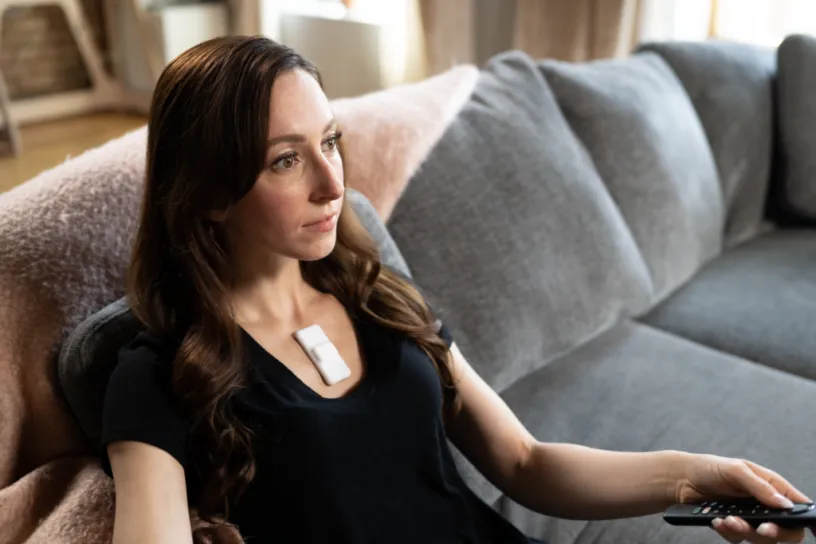Remote Monitoring in CNS Studies: The Power of Sensors

Effectively and accurately measuring disease progression in central nervous system (CNS) diseases, such as multiple sclerosis (MS), is complex and challenging. MS generally presents with a wide range of motor, cognitive, sensory, and visual impairments which can vary greatly between individuals over time. Adding to the difficulty are traditional clinical assessments that often rely on episodic, in-clinic evaluations and may not capture fluctuations in symptoms or subtle functional decline.
Advances in wearable sensors and passive actigraphy monitoring offer a promising, low-burden way to more accurately and continuously monitor the progression of many CNS diseases, including MS. The benefits include:
- Continuous real-world data: Wearables can passively collect data 24/7, providing new insights into daily function and changes over time
- Early detection of change: Subtle declines in gait, balance, or activity level can be detected between clinical visits
- Objective metrics: Actigraphy offers quantifiable, unbiased measures of motor function and movement, helping to standardize evidence generation.
- Improved treatment evaluation: Continuous monitoring can provide a more sensitive measure of therapeutic impact—especially in clinical trials, where detecting small but meaningful improvements is critical.
Read on to learn how Medidata is using real-world monitoring with wearable sensors to transform clinical research, unlocking new patient insights through passive activity monitoring in motion disorders like multiple sclerosis.
Challenging the Status Quo: Passive Data for Deeper Insights
A recent pre-print on MedRxiv highlighted the significant clinical relevance of passive data for assessing gait, sway, and mobility in persons with multiple sclerosis (PwMS).1 By analyzing six weeks of data, we found that passive data offers a more accurate reflection of symptom variability in daily life than a prescribed task, providing deeper insights into disease progression. Shorter analysis windows, such as three-day segments, also yielded more clinically meaningful results compared to aggregating data over six weeks.
Medidata offers proprietary metric packages specifically tailored for MS and other movement disorders such as Huntington’s, Parkinson’s, and Alzheimer’s diseases. These metric packages can include hundreds of measures computed from the accelerometer signal to provide insight into clinical change.
Gait Dynamics
Gait dynamics analyzes stride, swing, stance duration, duty factor, double support time, and average gait cadence for additional insights into a patient’s mobility behavior, which can reveal subtle changes in motor function and neuromuscular control.
Postural Sway
Postural sway captures a measure of a patient’s postural control, which is foundational to their ability to stand independently. Reduced postural control can indicate neurological decline, increased fall risk, or impaired balance due to musculoskeletal dysfunction.
Activity Complexity
Activity complexity analyzes continuous passive data—both movement and resting periods—to quantify intensity and duration to measure a patient's ability to adapt to internal states, such as pain, fatigue, and mood. For those with chronic balance and mobility impairment, various factors reduce the variety and intensity of body movements and activities, resulting in a decrease in the complexity of activity patterns.
Implications for Clinical Trials: A Unified, Actionable Approach
The findings from the recent pre-print on MedRxiv underscore the potential of passive analyses as promising digital biomarkers. Integrating passive monitoring into our unified platform allows us to continuously monitor movement patterns, gaining insights into disease progression, treatment efficacy, and potential exacerbations. This empowers sites and sponsors to take meaningful actions with sophisticated reporting tools and data accessibility.
We believe in the power of passive real-world monitoring in CNS to best understand behavior outside the clinic. By leveraging wearable technology and our unified platform, we gain deeper insights into patient health, leading to better treatment outcomes and improved quality of life for patients with CNS. As we continue to explore the potential of digital biomarkers, we’re excited about the future of personalized, effective healthcare solutions.
360° View: A Patient-centric Approach with Sensors
At Medidata, we deliver end-to-end technology experiences that support the entire clinical trial journey. Our fully integrated patient-centric portal, including wearable sensors, enables the collection of high-quality data at the patient source. This data is collected within a seamless experience while generating valuable insights for regulatory success.
We minimize patient burden by passively collecting data via wearable devices, allowing patients to participate from home, on-site, or on the go, improving compliance and retention. By analyzing real-world data, we can detect risks and safety events earlier and identify respondents sooner with more specificity. Integrated into our patient experience platform, see how Medidata sensors allow us to complement subjective ePRO data with high-fidelity objective data to deliver a 360-degree view of the patient.
References:
- Meyer, B. M., Agarwal, N., Gamboa, K. M., O’Learly, A., Solomon, A. J., McGinnis, R. S., & Ceruolo, M. (2024). Beyond prescribed activities: examining passive postural sway and gait data in patients with multiple sclerosis. medRxiv (Cold Spring Harbor Laboratory). https://doi.org/10.1101/2024.11.05.24316692
Contact Us
